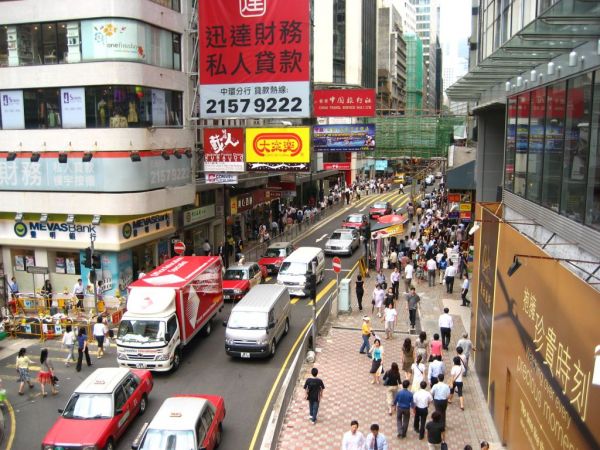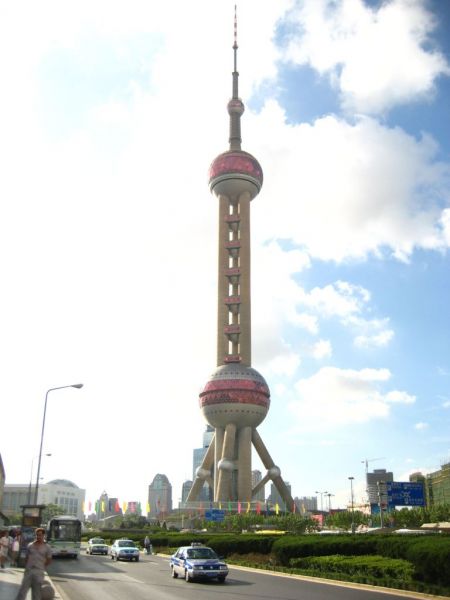It's time to assess this beautiful loop in China. A wonderful trip I can't summarize in a few words. Not everything was easy during this trip and some topics leave us wondering less than one year before the Olympic Games. The tourist who wishes to travel on his own will bump into several problems. The language barrier is the main one. At the restaurant, at the hotel or to move around despite the very good rail and road networks. Except the main cities and touristy spots, it's very hard to find someone who speaks the Shakespeare's language. I also point out : don't expect to find English signs in the bus or train stations. Another misunderstanding must be credited to some hotels which don't accept foreigners. Another difficulty turns out to be the cash withdrawal in all the cities but Shanghai, Beijing and the touristy spots. The ATM don't accept international credit cards (except for the Bank of China, although not always). And the counter clerks will stay puzzled while they stare at your card.
On the other hand, the remote hinterlands offer some genuine Chinese lures and a unique opportunity to live the country in its "original version". Learning basic Chinese and speaking in a so different language brings as much pleasure as discovering the natural gems of the country, its sacred mountains, the temples and its traditions. And these small worries look insignificant in comparison with the whirlpool of sensations the country brings.
Leaving Beijing, I have a change of scenery and head towards Nepal. A welcome change after one month spent with my family in the Mao's country. A part of the trip ends and a new one remains to be written onto the Himalayan heights. The transition goes off smoothly since my connection flight in Hong Kong leaves me enough time to visit the former British colony. The United Kingdom handed over the control of the protectorate to the Chinese government, 10 years ago. From this rich past and from its thriving present converges a subtle blend of Londoner trams, American fast-foods and Asian souls. In fact, Hong Kong is an island and a small part of the Hong Kong province that enjoys a relative autonomy. Chinese visa is not necessary to come here. Opposite the island, about a few hundreds meter away, there's the Kowloon district we can reach by boat or by metro. The town is definitely cosmopolitan, more in term of represented nationalities than type of workers, mainly tuxedo-clad businessmen.
The northern part of the Hong Kong island harbours a concentration of the tallest towers in the world. Down the towers, roads looks like tiny alleyways in comparison with giant-size skyscrapers. My urban walk is short but this city deserves to be known and remains a urban paradise for a lot of people wishing a renew in their professional career.







I take again the shuttle train and head for the airport before taking a plane to Delhi, then a new connection flight to Kathmandu after sleeping several hours at the transit area of the Delhi airport.
Keyword - capitalist madness -
Tuesday 28 August 2007
Transition in Hong Kong
By dorian on Tuesday 28 August 2007, 22:13 - RTW-China
Sunday 19 August 2007
The seething city of Shanghai
By dorian on Sunday 19 August 2007, 21:04 - RTW-China
From the motorway, in the distance, the concrete and glass colossuses of the thriving district of Pudong loom. It's precisely this district which started a metamorposis about 20 years ago and keeps on raising up thanks to foreign investments. It's today the economic lung of China ; not bad for a district that was a marshyland about thirty years behind!






Since 1990 the annual growth rate exceeds 10%, a genuine paradise for capitalist people when the government vainly tries to reconcile a communist policy in a city that is the total opposite of this idea. An increasing pitch between the neo-capitalist Chinese people and their compatriots who drive a rickshaw or sell vegetables can be seen everywhere in the street. In spite of the frightening, hard-to-accept contradictions, the first steps in the city are thrilling.



We wander about among the glass towers. Some of them are under construction and others didn't get out from the ground yet. High hedges mark out the building sites. Virtual skyscrapers-to-be representations are shown on them. On the other bank, at the end of the Bund (pedestrian street alongside the river), another gigantic project is under progress; the construction of the offshore port of Shanghai. A project that should end for the 2010 world exhibition the city will organize.
The evening stroll on the Bund is heady, the buildings on the other bank are adorned with many colours while the restaurant-boats and promotional boats come and go on the river. They took the place of the diurnal activity of barges and merchant ships.



The growth of the city is recent but its districts already have their history and their singularity. The old town and French concession districts offer nice time before taking the Maglev to go to the airport. The first magnetic levitation train in the world. No railroad and an incredible average speed of 430km/h ! No excuse any more to arrive late at your office!


Before leaving Shanghai, we hop on a lift which propels us up to the second sphere of the oriental pearl tower. A magical view over the turbulent Shanghai. We see several plots of land will change all, in a more or less long future, into pharaonic projects.



page 2 of 2 - next entries »




